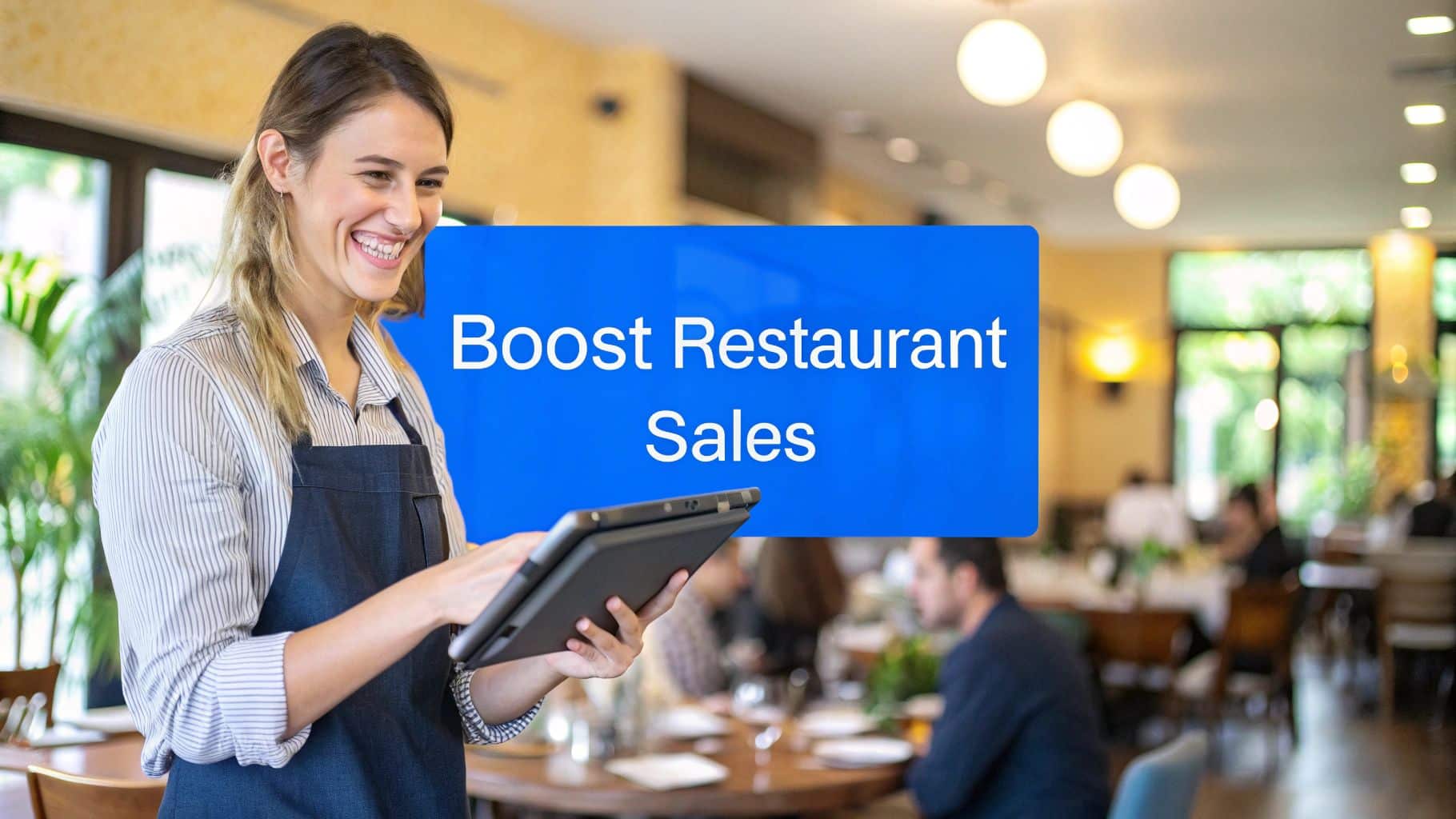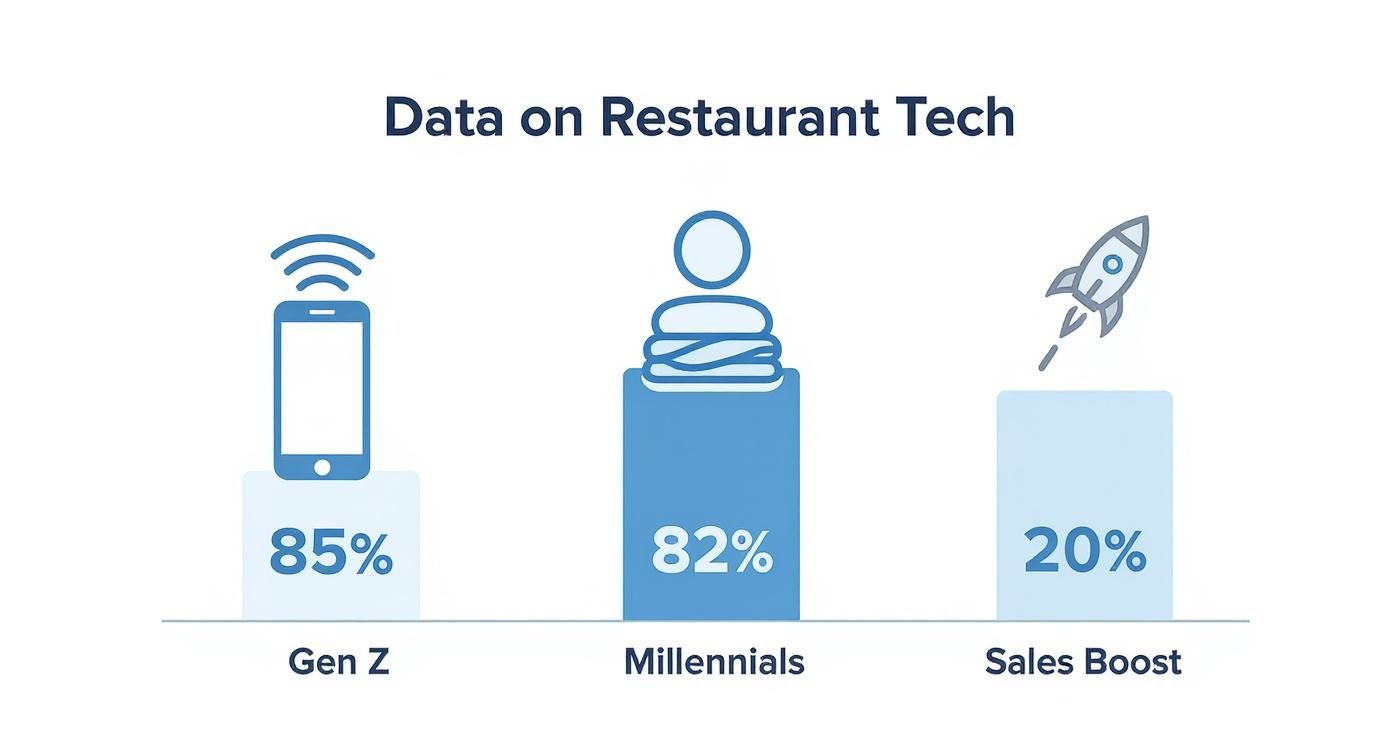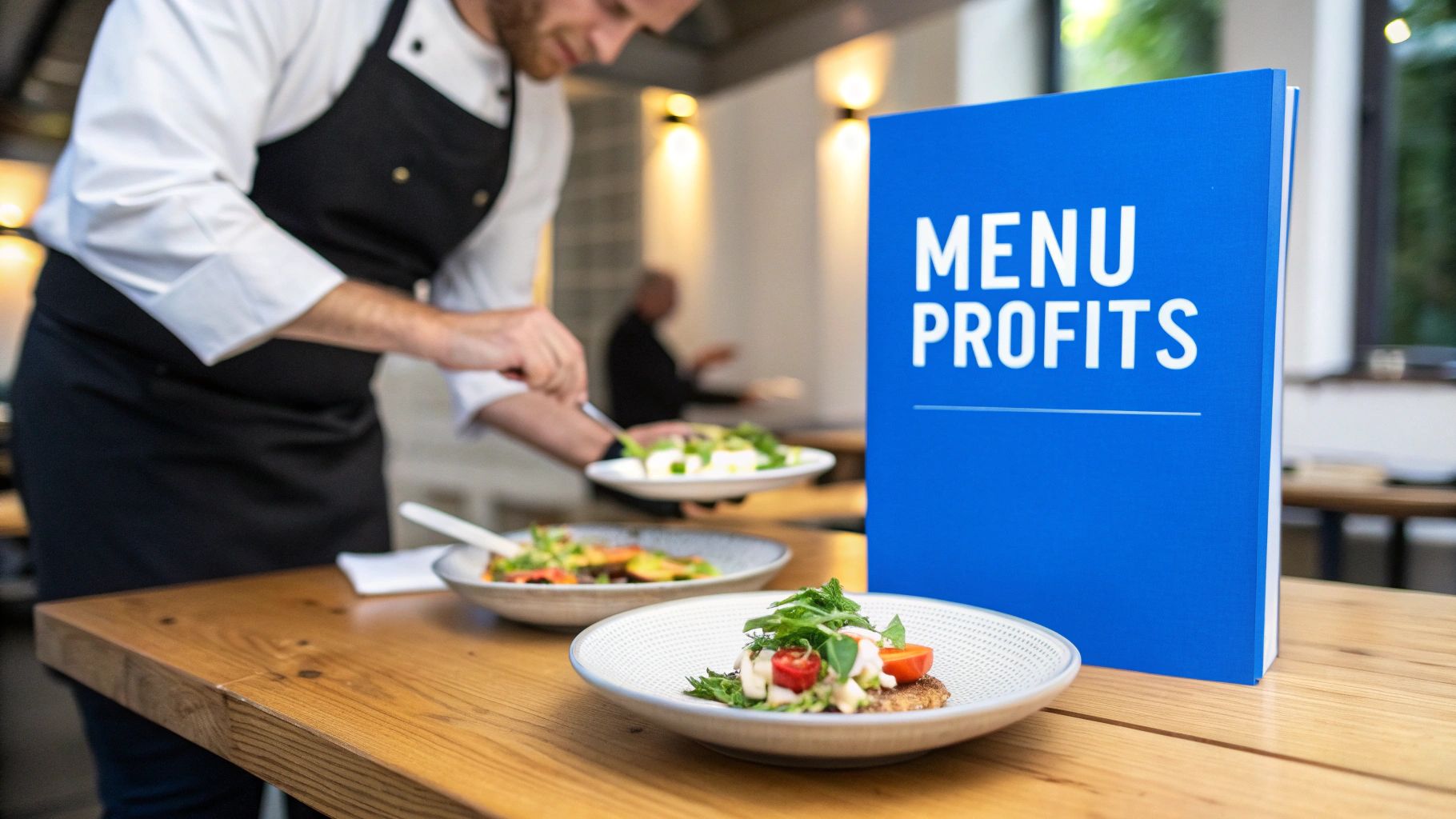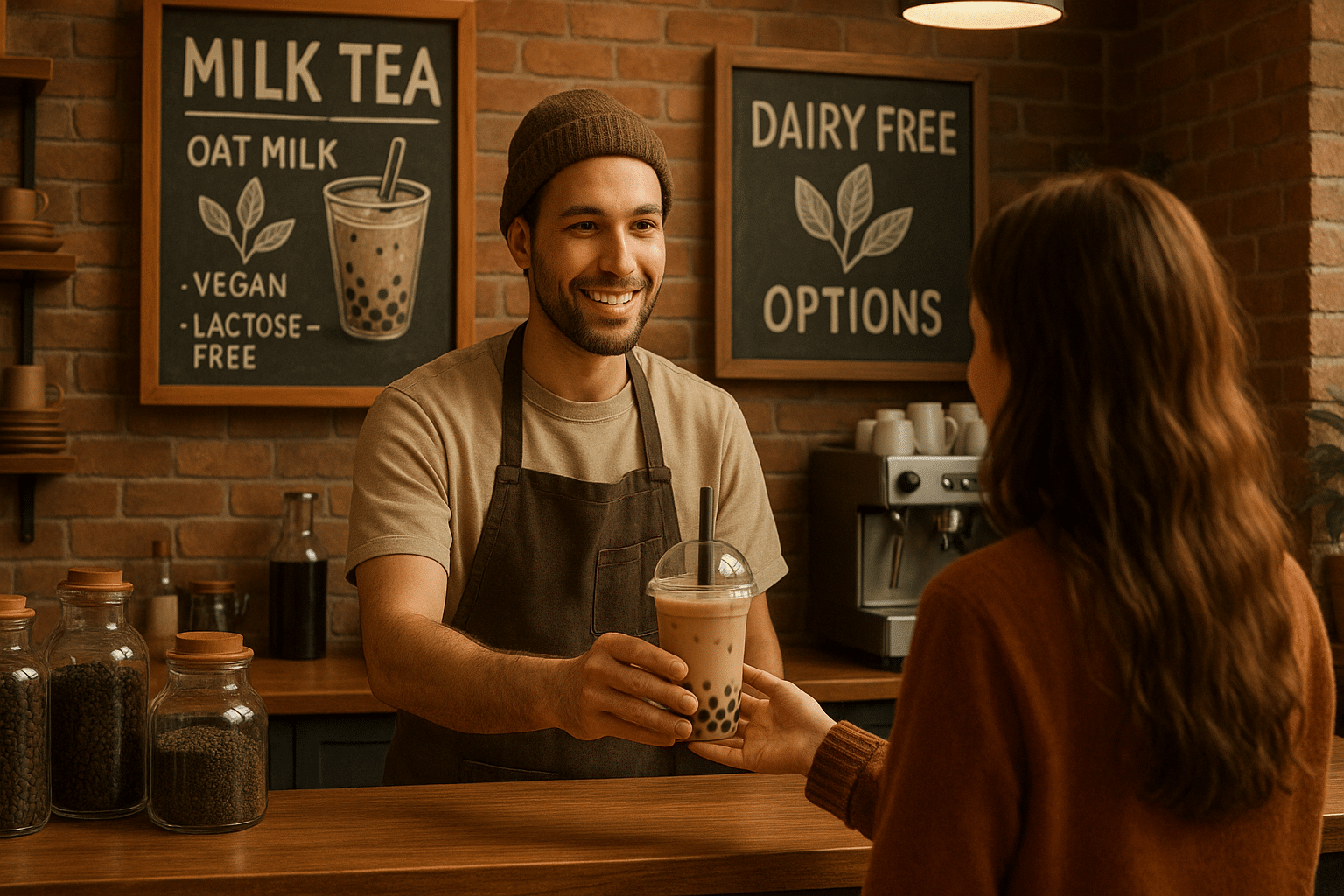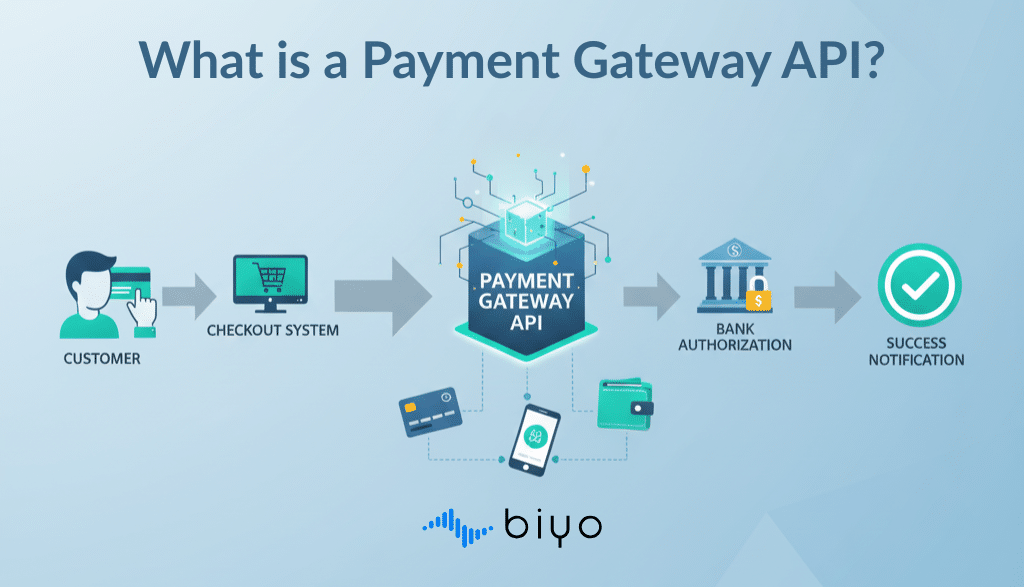The secret to growing your restaurant's sales doesn't always start in the kitchen. Long before a guest even walks through your door, you have a chance to win them over where they spend most of their time—online. It all comes down to creating a digital journey that’s completely effortless, starting with seamless online ordering and delivery.
Meet Modern Diners Where They Are
Let's face it, the way people find and choose restaurants has changed for good. While incredible food and top-notch service are still the heart and soul of your business, that first handshake with a new customer almost always happens on a screen.
Today's diners, especially the younger crowd, expect to get what they want with just a few taps. If they can't find you and place an order easily online, you might as well be invisible. You're leaving a huge chunk of potential revenue on the table.
The Power of a Seamless Digital Experience
Think of a clunky, confusing online ordering website as the digital version of a sticky table or a rude host. It creates instant frustration and sends potential customers running to your competitors. A truly great system should feel like a natural extension of your restaurant, integrating perfectly with how you already do things.
This is where your Point of Sale (POS) system becomes your command center. It needs to connect your website, your app, and any third-party delivery services straight to your kitchen. When everything is in sync, you'll see some immediate wins:
- Fewer Mistakes: Orders fly directly to your Kitchen Display System (KDS), which means no more errors from someone trying to re-enter an order by hand.
- A Smoother Kitchen: Your chefs get a clean, organized flow of tickets, which keeps the kitchen from descending into chaos during the dinner rush.
- Happier Customers: Getting the order right and getting it out the door faster is a simple recipe for happy customers who come back again and again.
Catering to the On-Demand Generation
The numbers don't lie. A staggering 85% of Gen Z and 82% of millennials now prefer using their phones for contactless ordering. This isn't just a small trend; it's a massive shift in what diners expect.
Restaurants that have leaned into this are seeing fantastic results, often reporting a sales lift of 15-20% after getting their digital ordering house in order. You can dig into more data on restaurant technology trends to see just how big this shift really is.
The infographic below really drives home how technology is shaping dining habits and directly impacting the bottom line.
It’s crystal clear: if you want to grow, you have to cater to the digital-first preferences of these generations. The connection between convenient tech and higher sales is undeniable.
To make this happen, a solid digital toolkit is non-negotiable. Below is a quick breakdown of the key strategies and how they directly influence your sales.
Key Digital Strategies and Their Sales Impact
| Digital Strategy | Primary Benefit | Average Sales Increase |
|---|---|---|
| Integrated Online Ordering | Expands reach beyond physical location and captures off-premise diners. | 15-20% |
| Loyalty & Rewards Program | Encourages repeat business and increases customer lifetime value. | 5-10% |
| Email & SMS Marketing | Drives direct traffic with targeted promotions and updates. | Varies by campaign |
| Third-Party Delivery Apps | Increases visibility to a broad, new audience of potential customers. | 10-25% |
These tools work together to create a powerful engine for growth, turning casual online browsers into loyal, repeat customers.
By meeting customers on the platforms they use every day, you're not just selling food; you're selling convenience that fits perfectly into their lives. Your website is the new front door to your restaurant.
At the end of the day, having the right technology is the foundation. A system like Biyo POS is built to be the central hub for your entire operation. It ensures that whether an order comes from your website, a delivery app, or a kiosk in your store, the experience is smooth and professional every single time. This is how you meet modern expectations and turn online interest into real, consistent sales.
Engineer Your Menu for Maximum Profit
Think of your menu as your restaurant's most valuable salesperson. It's more than just a list of what's cooking in the kitchen; when you design it with intention, it guides customer decisions, shines a spotlight on your most profitable dishes, and can dramatically increase your average check size.
This whole process is called menu engineering, and it’s one of the most powerful ways to boost your sales without spending a single extra dollar on marketing.
The core idea is pretty straightforward. You analyze every single item based on its popularity (how often it sells) and its profitability (the margin you make on it). This simple analysis lets you sort each dish into one of four groups, which then informs every decision you make—what to promote, what to reprice, and what you should probably just get rid of.
Unlocking Your Menu's Hidden Potential
Every menu has its hidden gems and its dead weight. By digging into the sales data from your POS system, you can finally see which items fall into each category and start taking targeted action to improve your bottom line.
Here’s a breakdown of how to think about your menu items:
- Stars: These are your rockstars—high in popularity and high in profitability. Customers already love them, and they make you great money. Your job is to make them impossible to miss. Give them premium placement on the menu and use enticing descriptions.
- Plowhorses: These are the crowd-pleasers. Everyone orders them, but they have lower profit margins. You definitely don't want to get rid of them, but you need to find ways to make them more profitable. Could you tweak the portion size slightly or pair them with a high-margin side dish?
- Puzzles: Here you have dishes that are highly profitable but, for some reason, just don't sell well. The challenge is to figure out why. Maybe the name is unappealing, the description is flat, or the price just seems a bit too high. Try renaming it, training your staff to recommend it enthusiastically, or feature it as a special to see if you can get some traction.
- Dogs: These are the items that are low in popularity and low in profitability. They're taking up valuable space on your menu and likely costing you money in wasted inventory. In almost every case, the best move here is to cut them loose.
"Your menu isn't just a list of food; it's a carefully crafted piece of marketing material. Every word, every placement, and every price point should work together to guide your guests toward the choices that benefit both them and your business."
If you want to go deeper into classifying your dishes and designing a layout that really sells, check out our guide on a strategic approach to menu engineering. It’s a complete walkthrough.
Designing a Menu That Sells
Once you know how each dish performs, you can get to the fun part: making strategic design choices. You’d be surprised how much simple tweaks can influence what your customers order. And for an even tighter grip on costs and consistency, which is absolutely crucial for profitability, look into implementing standard recipe formats in your kitchen.
Here are a few proven psychological tactics to try:
- Drop the Dollar Signs: Research has shown that removing currency signs ($) can actually encourage people to spend more. It subtly de-emphasizes the price. Simply listing "18" instead of "$18.00" can make a real difference.
- Use Descriptive Language: Don't just say "Chicken Breast." Try something like, "Pan-Seared, Herb-Crusted Chicken Breast with a Lemon-Butter Caper Sauce." Adjectives that bring flavor, texture, and origin to mind make dishes sound far more appealing and can easily justify a higher price.
- Guide Their Eyes: When people look at a menu, their eyes are naturally drawn to the top-right corner. This is prime real estate. Put your "Stars" there to make sure they get the most attention.
Keeping Things Fresh with Specials
A menu that never changes can get boring fast. A fantastic way to create a sense of urgency and excitement is to introduce seasonal specials and limited-time offers (LTOs). In fact, restaurants that introduced new menu items or LTOs saw an average sales lift of 10-15% compared to those with static menus.
What’s more, 68% of diners say they are more likely to visit a restaurant that regularly updates its offerings. You can read the full research about these restaurant industry trends.
This approach does more than just keep your regulars coming back. It’s also a low-risk way to test-drive potential new "Puzzles" or "Stars" before you give them a permanent spot on your menu. It’s a dynamic strategy that turns your menu from a simple list into an active engine for growth.
Turn Your Staff into Sales Superstars
A well-engineered menu is a fantastic start, but it's your people on the floor who truly bring it to life. One of the fastest ways to see a real jump in sales is by increasing your average check size, and that responsibility lands right on the shoulders of your front-of-house team. They’re the face of your brand, and with the right approach, they can go from being simple order-takers to trusted culinary guides for your guests.
This isn't about being pushy. It's about arming your staff with deep product knowledge and the confidence to make genuine recommendations that actually make the meal better. When a server can confidently suggest the perfect glass of wine for a steak or a premium side that complements a main, it doesn't feel like an upsell—it feels like expert advice.
The Art of Suggestive Selling
Great suggestive selling means getting rid of those tired, robotic questions. "Would you like an appetizer?" is a closed question that practically begs for a "no." It adds zero value and doesn't get the customer thinking.
The better way? Make specific, tempting recommendations. Instead of that generic question, imagine your server saying, "While you're looking over the menu, can I recommend our crispy calamari? It's a house favorite and perfect for sharing." That simple sentence paints a picture and piques interest.
To get your team to this level, they need to know the menu inside and out. Your training should hit these key points:
- Dish Ingredients and Flavors: Every server must be able to describe the core ingredients and taste profile of every single item. No exceptions.
- Perfect Pairings: Drill them on which wines, beers, or cocktails go best with your top-selling entrees.
- Premium Add-Ons: Show them the easy wins, like adding grilled shrimp to a salad or a drizzle of truffle oil to the fries.
This kind of detail turns a basic transaction into a curated experience. For a closer look at building a team that can pull this off, check out these effective strategies for staffing a restaurant to make sure you’re hiring and training the right people from day one.
Building Confidence with Real Scenarios
Role-playing is hands-down the best way to build your staff's confidence. Use your pre-shift meetings to run through common situations so they can practice their lines in a safe, low-pressure setting.
Let's walk through a common scenario: A table orders the pan-seared salmon.
- The Order Taker: "Great choice. Anything else?"
- The Sales Superstar: "Excellent choice, the salmon is fantastic tonight. It pairs beautifully with our Sauvignon Blanc, and the roasted asparagus is the perfect side to complete the dish. Would you like to add those?"
The difference is night and day. The second response is helpful, knowledgeable, and genuinely adds to the guest's meal, making it an easy "yes."
By transforming your servers into knowledgeable guides, you not only increase your average check size but also build trust and enhance guest satisfaction, creating a loyal customer base that returns for the exceptional service.
At the end of the day, your team has incredible influence over your guests' spending. By investing in solid training and giving them the tools to sell with confidence, you’re turning them into one of your most powerful assets for driving revenue. They are the final, crucial link in your sales strategy.
Build a Following That Keeps Coming Back
Getting new faces in the door is great, but the real money in this business comes from turning first-timers into regulars. A restaurant's long-term health depends on its loyal customers. It's way cheaper to keep a guest than to find a new one, and a smart loyalty program is your best bet for making that happen. In fact, a whopping 60% of restaurant revenue typically comes from those repeat visitors.
This isn't just about handing out a free coffee after ten stamps. Today's loyalty programs are about building a real connection. When you make your regulars feel noticed and valued, you're not just selling food—you're building a community around your brand that drives reliable, week-in, week-out sales.
Finding the Right Loyalty Program for Your Restaurant
There's no one-size-fits-all solution here. The best program for you depends entirely on your concept, your customers, and what your team can realistically manage. A simple punch card system might be perfect for a busy coffee shop, whereas a fine-dining spot could get more mileage out of an exclusive, tiered club.
Let's look at the most common models that work well:
- Digital Punch Cards: This is the classic "buy ten, get one free" brought into the 21st century. It's dead simple for customers to grasp and a breeze for you to run through your POS. No more lost or forgotten paper cards.
- Points-Based Systems: Here, customers earn points for every dollar they spend, which they can cash in for rewards down the road. This model is fantastic for encouraging people to spend a little extra each visit and gives you killer data on what they're buying.
- Tiered Programs: Think of this like a VIP club. The more a customer spends over time, the better the perks get. We're talking benefits like priority seating, first dibs on new menu items, or invites to special tasting events. It makes your top spenders feel like insiders.
To help you figure out what makes sense for your spot, here’s a quick breakdown of the pros and cons of each approach.
Comparison of Loyalty Program Types
Choosing the right structure is the first step. Think about what motivates your specific clientele—is it a straightforward freebie, the gamification of earning points, or the status of being a VIP? This table should help clarify which path to take.
| Program Type | Best For | Pros | Cons |
|---|---|---|---|
| Digital Punch Card | Cafes, QSR, casual eateries | Simple to understand and implement; encourages repeat visits for specific items. | Can feel transactional; offers limited data on overall spending habits. |
| Points-Based System | Full-service restaurants, bars | Encourages higher average checks; provides rich data on purchasing behavior. | Can be more complex to set up; rewards may take longer for customers to earn. |
| Tiered Program | Fine dining, multi-location groups | Creates a sense of exclusivity and status; strongly incentivizes top spenders. | May feel unattainable for casual visitors; requires careful management of perks. |
Once you’ve picked a model, the key is making it seamless. Integrating it directly with a system like Biyo POS is a game-changer because it automates everything. Points get tracked and rewards get sent without your staff having to lift a finger.
Use Your Data to Get Personal
A truly effective loyalty program gives you more than just visit counts; it gives you the insight to make your customers feel like individuals. This is where you graduate from a generic rewards scheme to a powerful relationship-building machine.
The goal is to make every guest feel seen and valued, whether they’ve visited once or a hundred times. Personalization is the key to fostering long-term relationships and sustainable business growth.
With the data from your program, you can stop shouting into the void with generic email blasts and start sending targeted offers that actually work. For instance, you can set up an automated "we miss you" promo that offers a discount on a customer's favorite dish if they haven't stopped by in 60 days.
This is also your chance to create those small moments of delight that build serious brand love. Imagine a guest getting an automated email on their birthday with a coupon for a free dessert. It's a tiny gesture that costs you next to nothing, but it makes them feel genuinely special. You can bet they'll be celebrating with you, not the restaurant down the street. This is how you stop being just another option and become their spot.
Use Data to Make Smarter Decisions
Gut feelings can get you far in the restaurant business, but data gets you further. Every transaction, every order, and every customer visit creates a trail of valuable information. Learning how to read this trail is the key to moving from guessing what works to knowing what drives real growth.
This is where you figure out how to truly increase sales in your restaurant.
Think of your POS system as more than just a cash register. It's a goldmine of data, quietly collecting details on your busiest hours, most popular dishes, and even your top-performing staff. Tapping into these analytics is like flipping on the lights in a dark room—suddenly, the path to smarter decisions is crystal clear.
Pinpoint Your Most Valuable Opportunities
First things first, you need to identify your operational peaks and valleys. Your sales reports can instantly show you which days and times are bringing in the most revenue. This information is pure gold for fine-tuning everything from your staffing schedule to your weekly promotions.
For instance, you might look at your reports and discover that your Tuesday lunch service is consistently slow. Instead of just shrugging it off, you can take action. Maybe you roll out a "Two-for-Tuesday" lunch special. Or you could run a highly targeted social media ad that only runs on Tuesday mornings, hitting people who work within a one-mile radius of your restaurant.
On the flip side, knowing your absolute busiest times helps you staff more effectively. If Friday nights are always slammed between 7 PM and 9 PM, you can make sure you have an extra server or bartender on the floor during that specific window. This simple move prevents service bottlenecks and helps you capture every possible sale when it matters most.
Track the Metrics That Actually Matter
To make any sense of the numbers, you need to focus on a few key performance indicators (KPIs). It's easy to get lost in a sea of data, but tracking these core metrics will give you a sharp, accurate picture of your restaurant's health:
- Average Check Size: This tells you exactly how much the average customer spends per visit. A rising number here is a fantastic sign that your upselling and menu strategies are hitting the mark.
- Table Turnover Rate: How quickly can you seat a new party after the previous one leaves? Shaving even a few minutes off this time can mean squeezing in several extra tables during a busy dinner rush.
- Sales Per Labor Hour: This KPI reveals how efficiently your team is generating revenue. It's crucial for finding that sweet spot between having enough staff for great service and being overstaffed, which eats into profits.
By consistently keeping an eye on these KPIs, you can spot trends early, fix problems before they get out of hand, and make adjustments that directly boost your bottom line. It’s the difference between reacting to your business and actively steering it.
Turn Insights into Actionable Strategies
Data is only useful if you do something with it. Once you've identified your absolute top-selling dishes, give them the prime real estate they deserve on your menu. If a particular promotion consistently creates a sales spike, you've found a winner—it's time to run it again.
This data-first approach bleeds into inventory management, too. By analyzing sales reports, you can forecast demand with much greater accuracy. This means less food waste and, just as importantly, never running out of a bestseller on a packed Saturday night. To really see how all the pieces connect, it's worth exploring how restaurant data analytics tools can help you maximize profits.
At the end of the day, your POS data tells the unfiltered truth about your business. It shows you what your customers love, when they want it, and what they're willing to pay. When you start listening to that data, you stop making decisions based on hunches and start building a more profitable, efficient, and successful restaurant.
Drive Growth with Local Marketing
While it’s tempting to chase a huge online following, the real heart of your restaurant's business beats right in your own neighborhood. Your local community isn't just a location; it's your most reliable source of regulars and your most passionate advocates. The secret today is blending smart digital moves with good old-fashioned community connection. It’s all about making sure that when someone nearby thinks, "Where should we eat tonight?" your restaurant is the only name that comes to mind.
This all starts where most local searches begin: Google. A well-tended Google Business Profile (GBP) is hands-down your most powerful free marketing tool. When that "best brunch near me" search happens, a complete and active profile is what gets you seen first.
Master Your Digital Front Door
Treat your GBP listing as your restaurant's digital storefront. Keeping it fresh with high-quality photos, accurate hours, and your current menu is table stakes. But the real magic happens in the interactions. Responding thoughtfully to all reviews—the good and the bad—shows everyone you’re listening and that you care.
Beyond Google, your social media channels are your neighborhood megaphone. You don't need a million followers to see a real impact; you just need to be smart with geotargeting. Platforms like Facebook and Instagram let you serve ads directly to people within a few blocks or miles of your front door.
Think about it: you could run a "Happy Hour" ad that only pops up on the phones of people in nearby office buildings, right around 4:30 PM. That's not just an ad; it's a perfectly timed invitation they can't refuse.
Get Out and Meet the Neighbors
Digital tactics are critical, but nothing beats real-world connections. To become a true neighborhood hub, you have to get out from behind the pass and become part of the community fabric. These offline efforts build a kind of loyalty that no ad campaign can ever replicate.
Here are a few ways to truly embed your restaurant in your local area:
- Sponsor a local team: Slap your logo on the jerseys of a kids' soccer team. You’ll create incredible goodwill with dozens of local families.
- Host can't-miss events: A weekly trivia night or a monthly "meet the brewer" evening gives locals a solid reason to choose your spot over their couch.
- Partner with other businesses: Team up with the cinema down the street for a "dinner and a movie" package or the boutique next door for a cross-promotional discount.
These aren't just one-off promotions. They weave your restaurant into the daily life of your community, turning you from just a place to eat into their place.
Local marketing is all about building relationships, not just running campaigns. When you invest in your community, your community invests right back in you, creating a solid foundation for growth that lasts.
Turning Local Buzz into Loyal Customers
The end game here is to create a cycle of local support that feeds itself. A great meal prompts a local to leave a fantastic Google review. That review convinces another neighbor to give you a try. They come to your charity event, feel a real connection, and boom—you’ve got a new regular.
This grassroots approach is how you build sales in a way that’s both authentic and sustainable. By nailing your local digital presence and getting your hands dirty offline, you cultivate a loyal following that becomes your best marketing asset. These are the people who don’t just come back every week; they're the ones proudly telling everyone they know that your place is the best in town.
Frequently Asked Questions
You've got the strategies, but let's tackle some of the common questions that pop up when you're trying to figure out how to best increase sales in your own restaurant. Here are some straightforward answers to help you move forward.
What's the Absolute Fastest Way to See a Sales Lift?
If you want to see a change by this weekend, focus on your average check size. Nothing moves the needle faster.
The most direct way to do this is through your staff. Train them on suggestive selling. This isn't about being pushy; it's about being helpful. When a server can confidently recommend that premium side of truffle fries, a specific wine that pairs perfectly with the steak, or the new signature appetizer, it genuinely improves the guest's experience. And for you? It means a bigger sale. This approach costs you almost nothing in dollars but can pay off in a single shift.
Another quick win is to smooth out your online ordering. If your digital menu is a pain to navigate or the checkout process is clunky, you're losing money. A clean, easy-to-use online menu that syncs right up with your POS makes it effortless for customers to order more, and more often.
How Can I Get More People in the Door During Slow Periods?
Those dreaded slow spells, like a Tuesday afternoon, are a golden opportunity for targeted promotions. Forget generic discounts and get a little more strategic.
- Rethink Happy Hour: Don't just slash drink prices. Create a small, exclusive menu of high-margin appetizers that are only available during those off-peak hours.
- Lean on Your Loyalty Program: Check your data. Send a "2x points on Tuesday" offer to your regulars. Give them a compelling reason to choose you when you need their business the most.
- Connect with Your Neighbors: Put together a special lunch combo for employees at nearby offices. Make it easy and affordable for them to escape their desks.
Which Marketing Strategy Gives Me the Best Bang for My Buck?
For a local restaurant, nothing beats optimizing your Google Business Profile (GBP). The return on investment is incredible because it’s completely free.
Think about it: when someone searches for "best tacos near me," you want to be at the top of that list. A well-managed profile with great photos, a flood of positive reviews, and an up-to-date menu gets you there. Considering that many people find and book restaurants through Google, a strong presence here means new customers walking in your door without you spending a dime on ads.
The real secret is consistency. You have to keep it fresh. Regularly posting updates and actively responding to reviews shows Google—and potential customers—that you're on top of your game and a solid choice in the neighborhood.
For a deeper dive into even more ideas, you can explore these additional strategies to increase restaurant sales. The most powerful path to growth is combining a rock-solid digital foundation with creative, well-timed promotions.
Ready to put these strategies into action with a system that makes it all seamless? Biyo POS is the all-in-one solution that brings together online ordering, loyalty programs, and powerful analytics to help you make smarter decisions and grow your sales. https://biyopos.com
